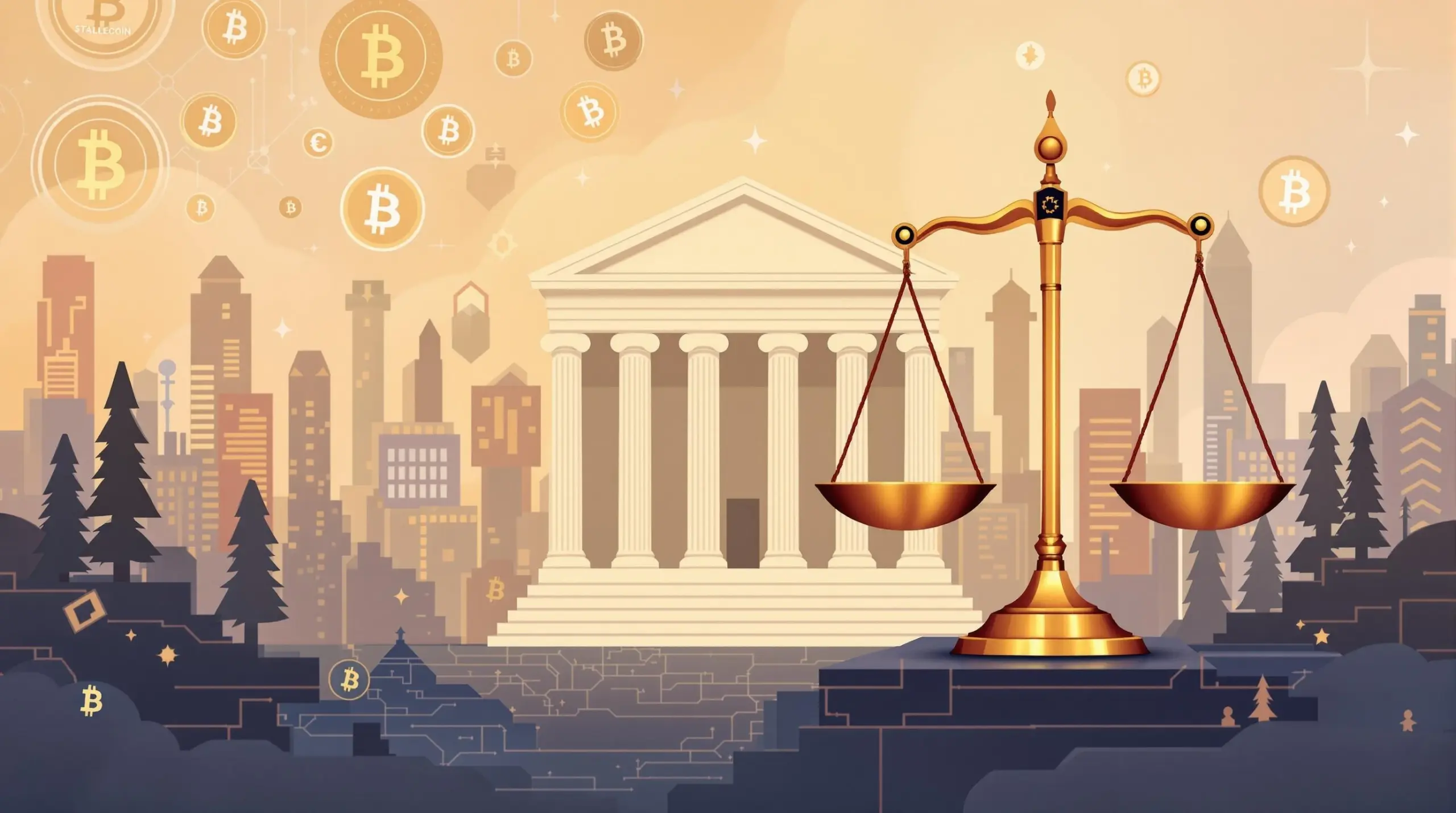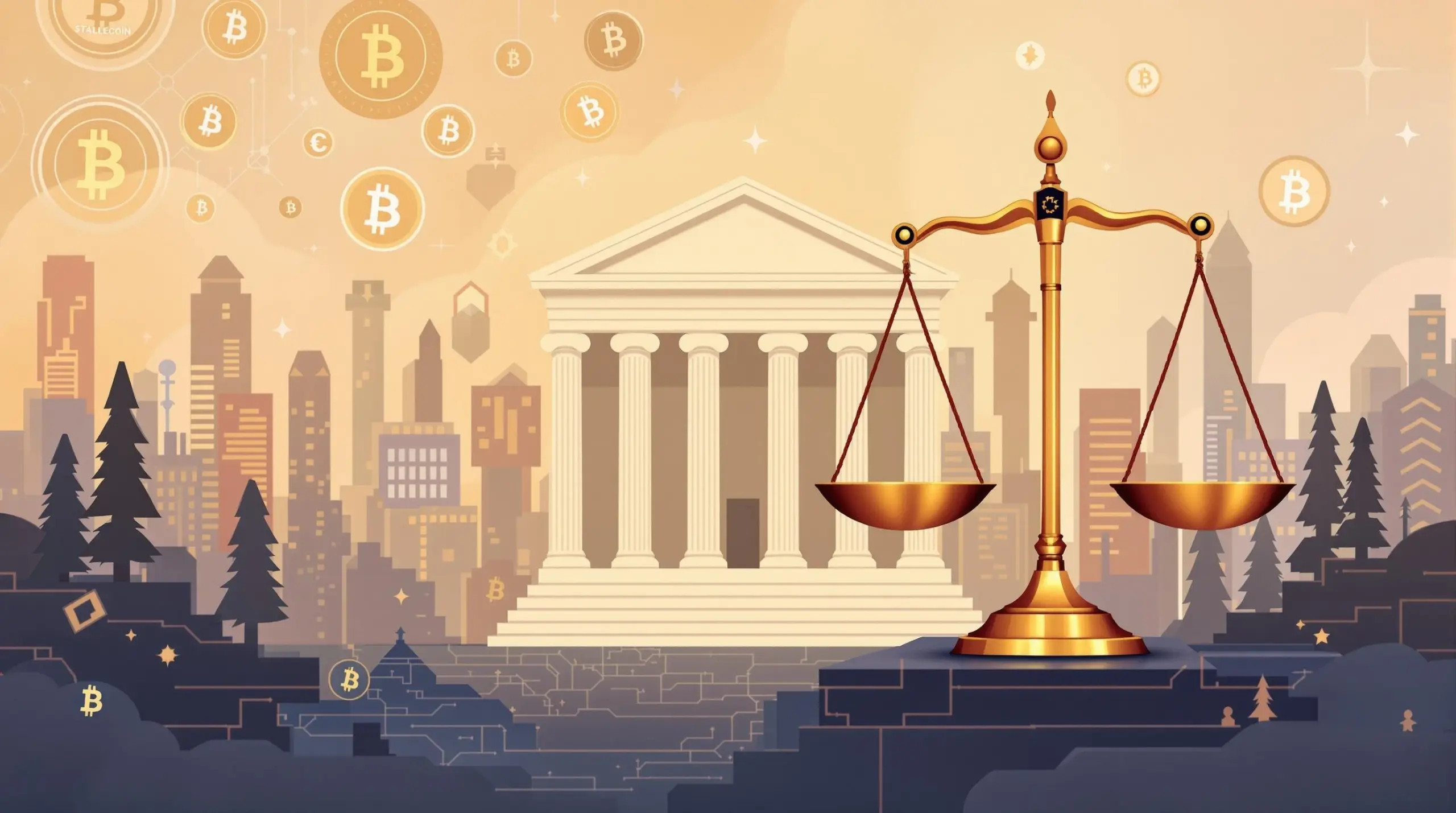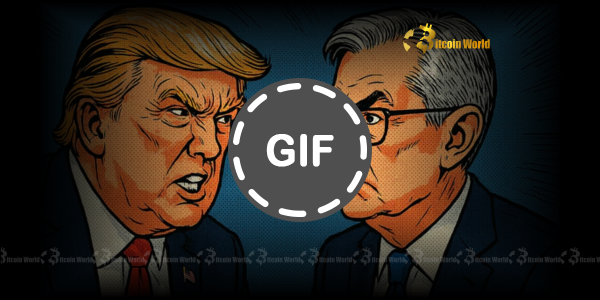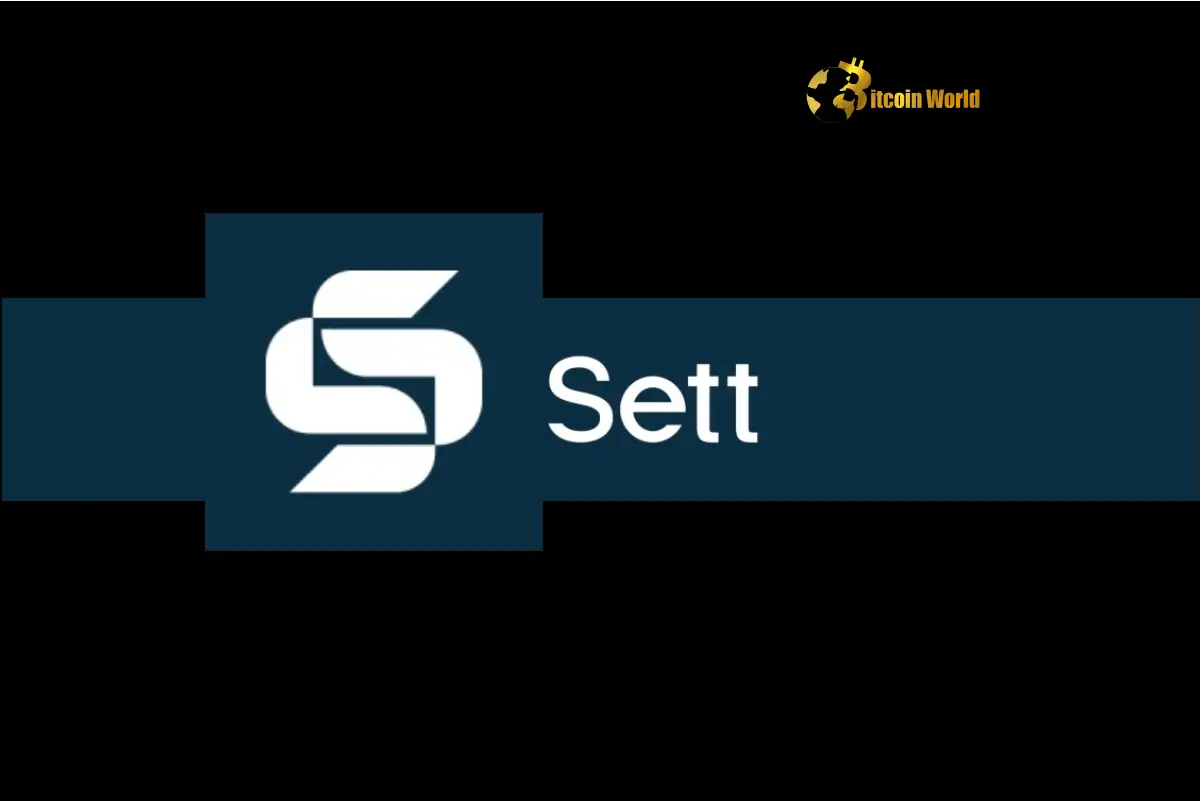BitcoinWorld

Stablecoin Regulation: A Pivotal Shift as SEC’s Atkins Advocates Banking Oversight
The world of digital assets is in a constant state of flux, rapidly innovating and challenging traditional financial paradigms. With this evolution comes an urgent, undeniable need for clear regulatory frameworks. A recent, significant statement from former U.S. SEC Commissioner Paul Atkins has ignited a fresh and crucial debate on stablecoin regulation, specifically regarding who should hold the reins of oversight for these increasingly vital digital currencies. His assertion, as reported by Odaily, that stablecoins fall squarely under the authority of banking regulators, marks a pivotal moment in the ongoing discussion about how best to integrate cryptocurrencies into the existing financial system.
Why is SEC Stablecoins Oversight Being Questioned?
Paul Atkins, a figure with a deep understanding of financial markets, having served as a Commissioner of the U.S. Securities and Exchange Commission (SEC) from 2002 to 2008, brings a wealth of experience to this discussion. His perspective on SEC stablecoins oversight is particularly noteworthy because the SEC has traditionally asserted jurisdiction over digital assets it deems to be securities. However, stablecoins, by their very design, often blur these lines. Unlike volatile cryptocurrencies such as Bitcoin or Ethereum, stablecoins are engineered to maintain a stable value, typically pegged to a fiat currency like the U.S. dollar, or to a basket of assets. This pegging mechanism, often backed by reserves, makes them resemble traditional financial instruments more than speculative investments.
Atkins’ argument suggests that the fundamental nature of stablecoins—their role as a medium of exchange, a store of value, and their reliance on reserves—aligns them more closely with traditional banking functions, such as demand deposits or money market funds. This perspective challenges the prevailing notion that the SEC, primarily focused on investor protection and securities markets, is the sole or even primary appropriate regulator for these assets. The implication is that stablecoins, particularly those backed by fiat currency, function less as an investment contract (a security) and more as a digital form of money, thus necessitating oversight from entities familiar with managing systemic financial risks and ensuring monetary stability.
The Argument for Banking Regulators Crypto Control
The core of Atkins’ position is rooted in the unique characteristics of stablecoins and the established expertise of banking regulators. When considering banking regulators crypto oversight, several compelling arguments emerge:
- Financial Stability: Banking regulators, such as the Federal Reserve, the Office of the Comptroller of the Currency (OCC), and state banking departments, are primarily responsible for ensuring the stability and soundness of the financial system. Stablecoins, especially large ones, could pose systemic risks if their reserves are mismanaged or if they experience a ‘run’ similar to a bank run. These regulators possess the tools and experience to manage such risks, including capital requirements, liquidity rules, and stress testing.
- Consumer Protection: Traditional banking oversight includes robust frameworks for consumer protection, such as deposit insurance (FDIC), anti-money laundering (AML) and know-your-customer (KYC) regulations, and consumer complaint mechanisms. If stablecoins are viewed as a form of digital money, then similar protections would be vital for users. Banking regulators are well-versed in enforcing these safeguards.
- Reserve Management: A key aspect of stablecoins is their backing by reserves. Banking regulators have extensive experience in overseeing the management of reserves for banks and other financial institutions, ensuring transparency, auditing, and proper asset allocation. This expertise is directly applicable to ensuring the integrity and solvency of stablecoin issuers.
- Payments System Integration: Stablecoins are increasingly used for payments and remittances. Banking regulators, in collaboration with central banks, oversee the national and international payments infrastructure. Their involvement could facilitate safer and more efficient integration of stablecoins into the broader financial payments ecosystem.
This perspective posits that while the SEC’s role in regulating investment products is crucial, the specific risks and functionalities of stablecoins might be better addressed by agencies whose mandate is centered on financial intermediation and systemic risk.
Navigating the Complexities of Digital Asset Oversight
The regulatory landscape for digital asset oversight in the United States is notoriously complex and often fragmented. Multiple agencies currently assert or seek jurisdiction over various aspects of the crypto market, leading to a patchwork of rules and sometimes conflicting guidance. This environment creates significant challenges for innovators, investors, and consumers alike.
Here’s a brief overview of the key players and their traditional roles:
- Securities and Exchange Commission (SEC): Focuses on securities markets, aiming to protect investors and maintain fair, orderly, and efficient markets. It applies the ‘Howey Test’ to determine if an asset is an investment contract.
- Commodity Futures Trading Commission (CFTC): Regulates commodity markets, including derivatives. It views Bitcoin and Ethereum as commodities.
- Treasury Department (FinCEN): Primarily concerned with anti-money laundering (AML) and countering the financing of terrorism (CFT) regulations.
- Federal Reserve: Oversees banks, monetary policy, and the payments system.
- Office of the Comptroller of the Currency (OCC): Charters, regulates, and supervises all national banks and federal savings associations.
The challenge for stablecoins is that they can exhibit characteristics that touch upon the mandates of several of these agencies. Are they a security? A commodity? A payment instrument? A banking product? Atkins’ statement pushes for a clearer categorization that would assign primary responsibility to banking regulators, potentially streamlining the approach to digital asset oversight for this specific class of crypto assets.
Shaping US Crypto Policy: What’s Next for Stablecoins?
The debate surrounding stablecoin regulation is not merely academic; it has profound implications for the future direction of US crypto policy and the broader global digital economy. Atkins’ intervention adds a significant voice to a growing chorus advocating for a tailored regulatory approach for stablecoins, distinct from that applied to other cryptocurrencies.
A shift towards banking regulator oversight for stablecoins could lead to several potential outcomes:
- Increased Legitimacy and Adoption: Clear, robust regulation by established financial authorities could instill greater confidence among institutional investors and traditional financial firms, potentially leading to wider adoption of stablecoins for payments, settlements, and other financial activities.
- Stricter Compliance Requirements: Stablecoin issuers would likely face more stringent requirements concerning capital reserves, liquidity, risk management, and consumer protection, mirroring those applied to traditional banks. This could increase operational costs but also enhance stability.
- Potential for Innovation Constraints: While beneficial for stability, overly prescriptive banking regulations could, in some views, stifle innovation in the decentralized finance (DeFi) space, which often leverages stablecoins. Balancing innovation with risk management will be key.
- Inter-Agency Cooperation or Conflict: Such a shift would necessitate greater cooperation between the SEC, CFTC, and banking regulators to delineate their respective roles clearly, or it could exacerbate existing jurisdictional disputes.
The U.S. Congress has also been actively considering legislation specifically for stablecoins, with various proposals attempting to define their legal status and assign regulatory authority. Atkins’ comments reinforce the urgency and complexity of these legislative efforts, suggesting a path that prioritizes financial stability and consumer protection through existing banking frameworks.
Benefits of Clear Stablecoin Oversight by Banking Regulators
If banking regulators were to take the lead, the benefits could be substantial:
- Enhanced Financial Stability: Leveraging their expertise in systemic risk, banking regulators can implement robust frameworks to prevent ‘runs’ on stablecoins and ensure their backing assets are securely managed.
- Improved Consumer Confidence: With regulatory clarity and oversight, consumers can use stablecoins with greater assurance, knowing there are established protections in place, similar to those for traditional bank accounts.
- Streamlined Institutional Adoption: Financial institutions often require clear regulatory pathways before engaging with new technologies. A well-defined framework from banking regulators could accelerate the integration of stablecoins into mainstream finance.
- Reduced Regulatory Arbitrage: By clearly defining stablecoins under a specific regulatory umbrella, it minimizes the ability for issuers to choose jurisdictions based on the laxity of rules.
Challenges and Considerations
However, the path to clear stablecoin regulation is not without its hurdles:
- Defining ‘Stablecoin’: Not all stablecoins are created equal. Some are fiat-backed, others crypto-backed, and some algorithmic. A nuanced approach is needed to avoid a one-size-fits-all regulation that could harm certain models.
- Jurisdictional Overlap: Even if banking regulators take the lead, aspects of stablecoins might still fall under the purview of the SEC (e.g., if they are part of a broader investment scheme) or CFTC (if used in derivatives).
- Innovation vs. Regulation: The crypto industry thrives on innovation. Overly restrictive regulations could stifle the development of new stablecoin use cases and technologies, potentially pushing innovation offshore.
Actionable Insights for the Crypto Community
For participants in the crypto ecosystem, Atkins’ statement serves as an important signal:
- For Stablecoin Issuers: Prepare for increased scrutiny on reserve management, transparency, and capital requirements. Engaging with banking regulators proactively could be beneficial.
- For Developers and DeFi Projects: Stay informed about evolving regulatory frameworks. Understanding the compliance landscape will be crucial for building sustainable applications that utilize stablecoins.
- For Users and Investors: Be aware that the regulatory environment for stablecoins is in flux. While increased oversight can bring stability, it also means adapting to new rules regarding how stablecoins can be used or held.
In conclusion, Paul Atkins’ call for banking regulators to oversee stablecoins represents a significant inflection point in the ongoing dialogue about how to effectively regulate digital assets. It highlights a growing consensus that stablecoins, due to their unique characteristics and potential systemic impact, may require a specialized regulatory approach that leverages the expertise of traditional financial overseers. While the path forward is complex and involves navigating intricate jurisdictional debates, the ultimate goal remains clear: fostering a secure, stable, and innovative environment for the future of digital finance. The evolution of US crypto policy around stablecoins will undoubtedly shape the landscape for digital assets for years to come.
Frequently Asked Questions (FAQs)
1. What exactly are stablecoins?
Stablecoins are a type of cryptocurrency designed to minimize price volatility. They achieve this by pegging their value to a stable asset, most commonly a fiat currency like the U.S. dollar, but sometimes to commodities (like gold) or other cryptocurrencies. They act as a bridge between traditional finance and the crypto world, offering the stability of fiat currencies with the benefits of blockchain technology.
2. Why is the regulation of stablecoins so important?
Regulation of stablecoins is crucial for several reasons. Firstly, it addresses financial stability concerns, especially for large stablecoins, by ensuring their reserves are properly managed and transparent. Secondly, it protects consumers from potential fraud or mismanagement. Thirdly, clear regulation can foster greater adoption by institutions and businesses, integrating stablecoins more safely into the broader financial system.
3. What is the key difference between SEC oversight and banking regulator oversight for stablecoins?
The SEC (Securities and Exchange Commission) primarily focuses on investor protection and regulating securities, determining if an asset is an investment contract. Banking regulators (like the Federal Reserve or OCC) focus on the soundness and stability of financial institutions, systemic risk, and consumer protection related to deposits and payments. Atkins argues that stablecoins, functioning more like digital money, fall better under banking oversight due to their reserve-backed nature and potential systemic impact.
4. How might this shift in regulatory focus impact the broader crypto market?
A shift towards banking regulator oversight for stablecoins could bring increased legitimacy and stability to the crypto market, potentially encouraging greater institutional adoption. However, it might also lead to stricter compliance requirements for stablecoin issuers, which could impact innovation, particularly in the decentralized finance (DeFi) space. It would also clarify the regulatory status of a significant portion of the digital asset market.
5. What does this mean for average stablecoin users?
For average stablecoin users, increased oversight by banking regulators could mean enhanced protection and greater confidence in the stability and reliability of the stablecoins they use. This might involve more robust reserve audits, clearer terms of service, and potentially mechanisms for dispute resolution or even some form of insurance, similar to traditional banking products.
Did you find this article insightful? Share your thoughts and help spread awareness about the crucial discussions shaping the future of digital finance! Share this article on your social media channels and join the conversation.
To learn more about the latest crypto market trends, explore our article on key developments shaping stablecoin price action.
This post Stablecoin Regulation: A Pivotal Shift as SEC’s Atkins Advocates Banking Oversight first appeared on BitcoinWorld and is written by Editorial Team





